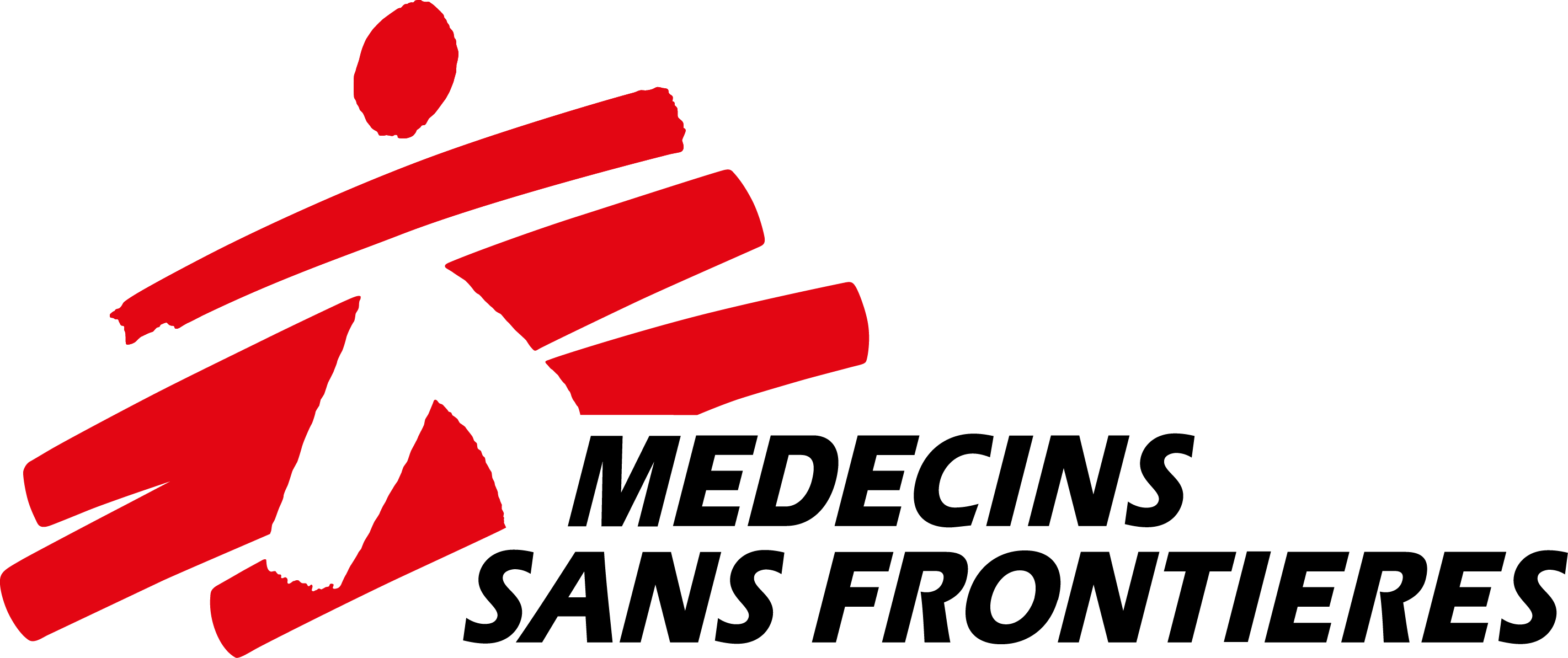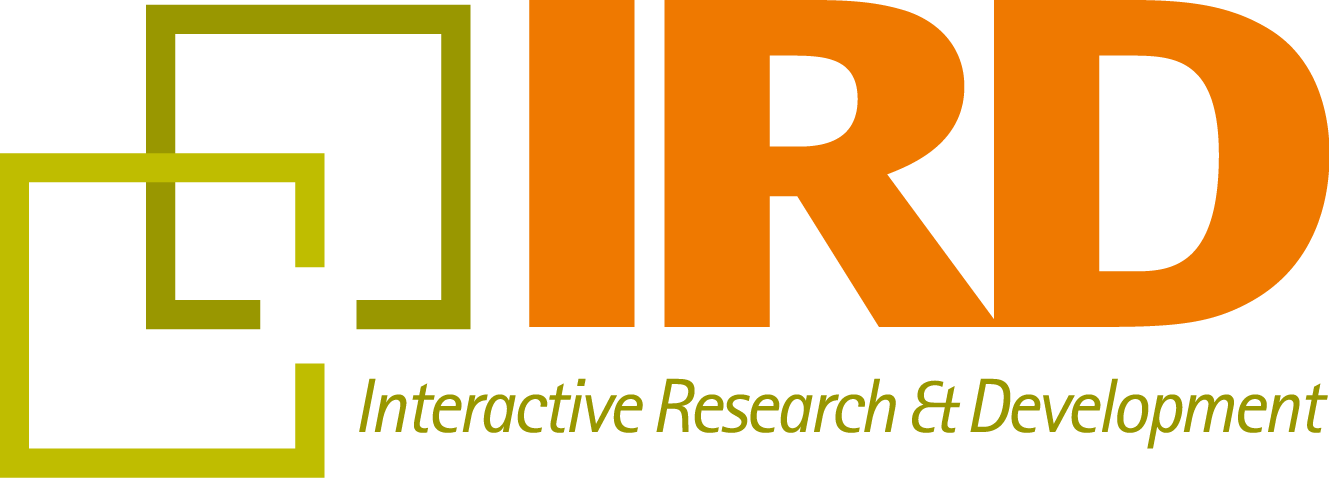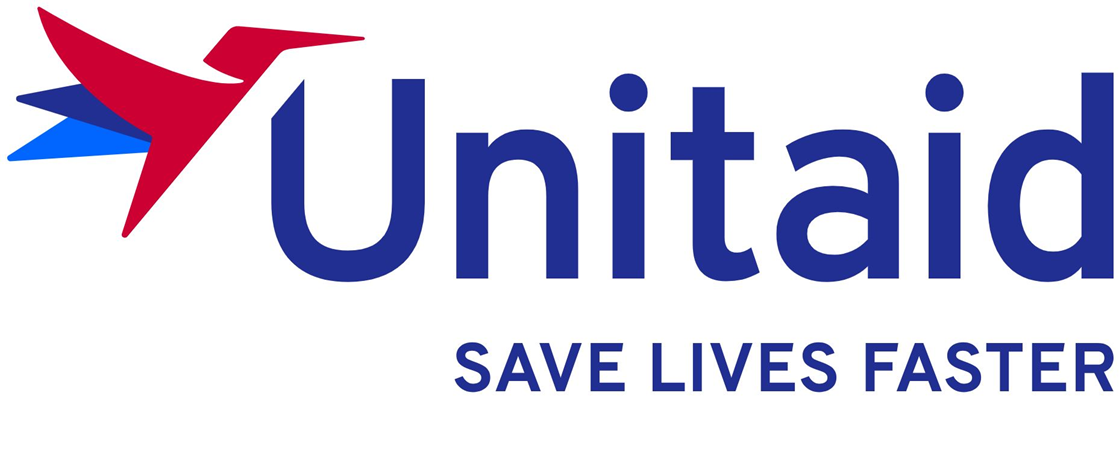Click on the following links to watch the video with subtitles: Español Français Русский
[Press release]
Landmark Clinical Trial Redefines Multidrug-Resistant Tuberculosis Treatment Options
endTB Clinical Trial Offers Multiple New Shortened Drug Regimens to Treat Adults and Children with Multidrug-Resistant Tuberculosis
Paris, France; November 15, 2023 – Clinical trial results presented for the first time today at the Union World Conference on Lung Health revealed evidence to support the use of four new, improved regimens to treat multi-drug resistant tuberculosis or rifampicin-resistant tuberculosis (MDR/RR-TB). The team—led by Médecins Sans Frontières (MSF), Partners In Health (PIH), and Interactive Research and Development (IRD) and funded by Unitaid—formed the endTB consortium and began this Phase III randomized controlled trial in 2017.
MDR/RR-TB is a disease caused by a TB bacterium that is resistant to rifampicin, one of the most powerful first-line antibiotics, plus/minus resistance to isoniazid. Roughly half a million people fall sick with MDR/RR-TB each year, and many die from it. Though a range of MDR-TB regimens are now in use around the world, many people are still treated with conventional treatments that are long (up to 24 months), ineffective (only 59% treatment success in 2018), and often cause terrible side effects, including acute psychosis and permanent deafness. Patients on these regimens must ingest up to 14,000 pills over the full course of treatment, and some have to endure months of painful, daily injections.
The trial found three new drug regimens that can deliver similar efficacy and safety to conventional treatments while reducing treatment time by up to two-thirds. The endTB regimens represent important alternatives for short MDR-TB treatment and complement the use of another highly effective, shorter MDR-TB regimen, called BPaLM, which is not suitable for certain populations. If recommended by the World Health Organization, these new patient-centered treatment regimens would empower clinicians to offer shortened MDR-TB treatment regardless of age, pregnancy, and comorbidities that are common among people with MDR-TB.
In addition, the trial supports the use of a fourth regimen as an alternative for people who cannot tolerate bedaquiline or linezolid; at least one of these two drugs is in every current World Health Organization-recommended regimen for MDR-TB.
The endTB trial enrolled a diverse group of 754 patients from seven countries (Georgia, India, Kazakhstan, Lesotho, Pakistan, Peru, and South Africa). This included historically excluded populations like adolescents and those with comorbidities like substance-use disorders, and retained participants who became pregnant during the trial. The trial evaluated five nine-month treatment regimens, and randomization was outcome-adapted, meaning more patients were assigned to regimens that were producing better outcomes.
“We stand on the cusp of a significant breakthrough in the battle against MDR, a disease that disproportionately affects impoverished populations around the globe. Our results offer hope to those in dire need and underscore the urgency of continued research and innovation—and accountability of private companies that receive public funds—to address diseases that too often strike the most vulnerable among us. But the cost of some drugs remains a barrier. One example is delamanid which is still priced at 12-40 times higher than it should be according to an independently estimated cost to produce the drug,” said Carole Mitnick, ScD, Partners In Health Director of Research for the endTB project, Co-Principal Investigator of the study, and Professor of Global Health and Social Medicine at Harvard Medical School.
“For far too long, MDR-TB has loomed as a formidable threat with limited, poorly tolerated treatment options, but today, we unveil evidence for multiple innovative all-oral, shortened regimens that will allow patient-centered, individualized treatment of MDR-TB. This marks a pivotal moment in the fight against a disease that has plagued vulnerable populations worldwide. What makes these results even more remarkable is the diversity, and resulting generalizability, of this Phase III randomized controlled trial,” said Lorenzo Guglielmetti, MD, Médecins Sans Frontières Director for the endTB project and Co-Principal Investigator of the study.
“These results provide new hope for all those awaiting treatment for the most dangerous and difficult to treat forms of tuberculosis worldwide,” said Dr Philippe Duneton, Executive Director of Unitaid. “We have the gold-standard research. The drugs are already available where they are needed. If recommended, this high-quality evidence could quickly translate into better treatment options suitable for all people with drug-resistant tuberculosis.”
The endTB clinical trial evaluated five experimental regimens for MDR/RR-TB against the standard of care in two distinct analysis populations. endTB regimens 1, 2, 3, demonstrated non-inferiority to the control in both primary analysis populations, establishing their success in treating RR-TB. Regimens 1, 2, and 3 achieved favorable outcomes in 89.0%, 90.4%, and 85.2% of participants, respectively. Regimen 5 also showed a strong treatment response at 85.6% and was non-inferior to the control's 80.7% in one of the primary analysis populations. While consistent results in both populations are needed to formally establish non-inferiority, regimen 5 holds promise as an alternative for patients unable to receive other recommended treatments.
True access to these new treatment options depends on removing all barriers to timely and high-quality care. These trial results could address a major barrier to care for many people and the endTB consortium will continue to advocate to improve access and affordability to quality TB care.
Download the leaflet on the endTB clinical trial results here:
Leaflet on the endTB Clinical Trial results (4.28 MB)
Download the PowerPoint slides of the endTB trial results presentations at the Union World Conference 2023 here:
PowerPoint slides of the endTB trial results presentations at the Union World Conference 2023 (2.2 MB)
Download the pre-print of the endTB results manuscript “Nine-month, all-oral regimens for rifampin-resistant tuberculosis” here:
endtb results preprint.full_.pdf (751.99 KB)
Please click here to see the YouTube video presentation of the endTB clinical trial results at the Union World Conference 2023.
Please click here to see the YouTube video of Researchers sharing with communities Results from the endTB trial at The Union World Conference 2023.
FAQs
What is endTB?
“Expand new drug markets for tuberculosis” (endTB) is a partnership among Partners In Health (PIH), Médecins Sans Frontières (MSF), Interactive Research & Development (IRD) and our funder, UNITAID. endTB aims to find shorter, less toxic and more effective treatments for multidrug-resistant and rifampicin-resistant tuberculosis (MDR/RR-TB), an airborne infectious disease that has grown resistant to standard medications. We achieve this goal through increased access to new treatment regimens, observational research, two clinical trials and advocacy at country and global levels.
What is “MDR/RR-TB”?
MDR/RR-TB is defined as tuberculosis (TB) disease caused by Mycobacterium tuberculosis, a bacterium that is resistant to rifampicin alone (RR-TB) or resistant to rifampicin and isoniazid (MDR-TB), the two most powerful first-line antibiotics. TB is the leading infectious killer of adults.
What is the endTB clinical trial?
In 2017, MSF, PIH, IRD, and other partners launched the “endTB” clinical trial seeking treatment for the toughest strains of TB. endTB was launched because conventional treatments for MDR/RR-TB were long (up to 24 months), ineffective (only 58% treatment success in 2017) and often caused terrible side effects, including psychosis and permanent deafness. All the while, patients were taking up to 14,000 pills and most had to endure months of painful, daily injections. Moreover, the cost, difficulty and length of such treatments made them hard to implement in many high-burden countries.
Although two new drugs, bedaquiline and delamanid, the first TB drugs developed in almost 50 years, were brought to the market in 2012 and 2014 respectively, the developers stopped short of optimizing use of these drugs. Without concerted efforts by non-industry groups to test drug combinations, such combinations would never be evaluated. endTB partners stepped into the breach to optimize the use of these new drugs in radically shorter (9 months), more tolerable and injection-free treatments for MDR/RR-TB.
The endTB clinical trial enrolled 754 patients across eleven sites in seven countries on four continents: Georgia, India, Kazakhstan, Lesotho, Pakistan, Peru and South Africa. These are all countries with significant TB burdens, where MSF, PIH or IRD support local MDR/RR-TB treatment activities.
What was the study design?
endTB is a randomized, controlled, open-label, non-inferiority, Phase III clinical trial. It tested five new, all oral, 9-month regimens to treat adult pulmonary MDR/RR-TB and compared their performance to the current standard of care. Randomization was outcome-adapted, rather than fixed. This means that more patients were assigned to regimens that were producing better outcomes as such outcomes were reported overtime. The study protocol is publicly available.
What drugs were used in endTB?
Drugs used in the endTB clinical trial experimental arms were: bedaquiline, delamanid, clofazimine, linezolid, moxifloxacin or levofloxacin, and pyrazinamide. Bedaquiline and delamanid are considered to be "new” TB drugs as they were relatively recently brought to market, in 2012 and 2014, respectively. This new generation of drugs, developed after a nearly 50-year drought in new anti-TB drug classes, now allows for radically shorter (6 or 9 months versus as long as two years), more tolerable, injection-free treatments for MDR/RR-TB. Clofazimine, linezolid, levofloxacin, and moxifloxacin are considered TB “re-purposed” drugs. They have been developed to treat other diseases but are also used to treat MDR/RR-TB.
Each experimental regimen in the endTB trial contained at least one new drug, in combination with up to four companion drugs. The control regimen was the local standard of care treatment for MDR/RR-TB pulmonary TB, consistent with the latest World Health Organization (WHO) recommendations, including bedaquiline and/or delamanid if indicated. The clinical trial compared the efficacy and safety of each experimental regimen to the control arm.

Which groups of people were included and excluded in the trial?
endTB was designed to include as many different populations, as safely as possible and as allowable by regulatory bodies and ethics committees. endTB was designed with the objective of testing the effectiveness of multiple drug combinations on a diverse population of patient volunteers living on four different continents, including adolescents and retaining in the trial pregnant people, two populations historically excluded from clinical trials. Patients with severe disease and important comorbidities, such as diabetes, and infection with HIV, hepatitis B and hepatitis C virus, were also included.
All 754 patients included in the endTB clinical trial had pulmonary TB, with or without extrapulmonary disease. Everyone provided informed consent prior to starting the trial. They all had rifampicin-resistant and fluoroquinolone-susceptible TB. They were at least 15 years old. A negative pregnancy test was required for inclusion of women of child-bearing potential, but women who became pregnant during the trial could continue the treatment with clinician endorsement and participant consent. Everyone provided thorough informed consent prior to starting the trial.
Trial exclusion criteria were: allergy or hypersensitivity to drugs used in the trial or showing resistance to bedaquiline, delamanid, clofazimine or linezolid; pregnancy, breastfeeding; cardiac risk factors for arrhythmia; severe lab abnormalities, including uncorrectable electrolyte imbalance, and alterations of hemoglobin, creatinine, and liver enzymes.
What is a non-inferiority trial?
The aim of a non-inferiority trial is to show that the new treatment tested is not worse than the existing one by a pre-specified amount. If this can be established, the new treatment can be considered as a replacement for the existing treatment, especially if it has other advantages which make it preferable (due for instance to better duration, tolerance or safety).
What were the most common side effects observed in the clinical trial?
All adverse events (any unfavourable and unintended signs, including abnormal laboratory results, symptoms or a disease, related or not to the treatment regimens) experienced by patients were reported in a standardized manner throughout the trial. Trial results showed that the experimental regimens led to a similar rate of serious adverse events compared to the standard treatment.
The most common and frequent adverse event observed was hepatotoxicity (impairment of the liver function). Liver-related side effects are known side effects of most drugs used to treat TB and MDR-TB. During the endTB trial, clinicians performed monthly patient follow-up, leading to a readjustment of treatment when necessary, and all cases of drug-induced hepatotoxicity did not lead to irreversible health consequences for patients who were part of the trial.
Cardiotoxicity can also be caused by most of the drugs included in the endTB regimens (bedaquiline, moxifloxacin, clofazimine-major; delamanid, levofloxacin-modest) and was one of the biggest concerns with the advent of the new drugs. In endTB trial, cardiotoxicity was not a major issue. It occurred infrequently, and only when clofazimine was paired with another major QT-prolonging drug.
Mortality and recurrence of TB (i.e., cultures that become positive again after the end of treatment) were uncommon.
How does this trial affect the life of current and future MDR/RR-TB patients?
endTB results offer multiple new patient-centered treatment alternatives to the existing MDR/RR-TB regimens and to drug intolerances, drug-drug interactions, contraindications, drug resistance and lack of drug availability. They will empower clinicians to tailor shortened MDR/RR-TB treatment to individual patient characteristics and conditions, regardless of age, pregnancy, and comorbidities (including HIV, diabetes, and Hepatitis B and C, substance use disorders) that are common among people with MDR/RR-TB.
endTB highlights potential for regimens that can be used in pediatric populations and pregnancy: drugs contained in all endTB regimens are recommended for use in children and have pediatric formulations. The trial could provide evidence for safe, effective and simplified treatment alternatives for children. endTB regimens contain only drugs that, on the balance, are generally accepted for use in pregnancy. Non-inferior regimens could be recommended for pregnant people.
What difference do the endTB results make for MDR/RR-TB patients compared to BPaLM?
In 2022, WHO included a new recommendation on the use of a novel all-oral 6-month regimen, BPaLM, to their guidelines in the aftermath of the TB-PRACTECAL clinical trial. This regimen shortens the duration of treatment of DR-TB to 6 months. The endTB clinical trial outcome provides options for 9-month regimens.
TB-PRACTECAL and endTB clinical trials were both launched in 2017 with the same objective of finding safer, shorter, and more tolerable treatment regimens for drug-resistant TB. TB-PRACTECAL, a Phase II/III clinical trial sponsored by MSF, found that the new shorter BPaLM treatment regimen was more effective and safer than the current standard of care against rifampicin-resistant TB. The WHO issued new guidelines in December 2022 that recommend countries to roll out the safer and shorter regimen, BPaLM, to treat people with DR-TB, partly based on the results of MSF’s TB PRACTECAL trial.
Both the endTB trial and TB-PRACTECAL offer revolutionary evidence that MDR/RR-TB, a disease disproportionately affecting low- and middle-income countries around the globe, is not a lost battle and that safer and shorter treatment options using available drugs do exist and can save lives. TB-PRACTECAL and endTB have both been filling the gap left by the pharmaceutical industry, which promptly lost interest in MDR-TB treatment research following the approval to offer new single TB drugs to high-income countries.
The two clinical trials are complementary and bring solid regimen packages for physicians to offer patient-centered care with an improved standard which has a significantly lower pill burden taken over a considerably shorter amount of time (from up to 24 months to 6 or 9 months), less side effects and substantially less distressing ones, and no more daily drug injections. With the unveiling of endTB results this year, multiple treatment options could be added to the ones already existing, especially for particularly difficult-to-treat patients, regardless of pregnancy, age and presence of comorbidities including HIV, diabetes, and hepatitis B and C virus.
Ultimately, these trials address the critical need for increased treatment options – and increased access – for the approximately 500,000 people who fall sick each year with MDR-TB.
How has ‘cured’ been defined in endTB? What proportion of patients were cured throughout the trial?
Patients were carefully monitored with regular sputum sample analyses, a chest X-ray at week 8, 39 and 73, and clinical evaluation at every visit. After 73 weeks of follow up, if a patient showed repeated negative sputum cultures and/or evidence of clinical and radiological improvement, they were considered as showing favorable outcomes (the equivalent to being cured in a clinical trial). Regimens endTB1, endTB2, and endTB3 achieved impressive success rates of 89%, 90.4%, and 85.2%, respectively, with regimen endTB5 also showing promise at 85.6%, compared to the control's 80.7%.
Could a patient take one of the endTB regimens while pregnant or planning a pregnancy?
Patients of childbearing potential had to present a negative pregnancy test to start the trial and agree to use birth control methods during the trial period, but participants who became pregnant during the trial could continue the treatment with investigator endorsement and participant consent and this was deemed appropriate in the best interest of the patient. Overall, 10 participants became pregnant while on endTB treatment and 8 continued treatment. No signals of toxicity of the treatment for the mother or the newborn were detected.
endTB regimens contain only drugs that, on the balance, are generally accepted for use in pregnancy. Non-inferior endTB regimens can be recommended for pregnant people.
What results were presented in the Union Conference in November 2023?
The endTB trial compared five experimental 9-month treatment regimens for treating MDR/RR-TB containing one or two new TB drugs, bedaquiline and delamanid, combined with other oral TB drugs. Following six years of trial, the groundbreaking endTB results provide robust evidence for three of these regimens (endTB1, endTB2 and endTB3) that are non-inferior to the control arm – the standard-of-care regimens used as a reference arm in the trial. Furthermore, results of the endTB2 regimen showed that this combination of drugs is also superior to the standard of care (in the “modified intention-to-treat” (mITT) population only*). These new regimens can be used nearly universally in people of all ages with MDR/RR-TB.
In addition, the trial supports the use of a fourth regimen (endTB5) as an alternative for MDR/RR-TB patients who cannot receive bedaquiline or linezolid, two drugs that are included in nearly every current WHO-recommended regimen for MDR/RR-TB. The remaining treatment regimen (endTB4) did not achieve non-inferiority.
The endTB trial found excellent results in populations with severe disease and comorbidities (HIV, diabetes, hepatitis B and C virus).
For the first time ever, there is a suite of 5 all-oral regimens of no more than 9 months duration which can likely be used in more than 90% of infants, children, adolescents and adults with MDR-TB, including pregnant people. All can be composed with a formulary of only 8 drugs. Two non-inferior regimens which contain bedaquiline cost under $400 for the full cost of treatment; one costs under $600. The two delamanid-based regimens will reach the same cost as soon as delamanid reaches its target generic price. The landscape of MDR-TB treatment—and the evidence underlying it—has been completely transformed.
More detailed results:
The endTB clinical trial evaluated five experimental regimens for MDR/RR-TB against the standard of care in two distinct analysis populations. Regimens 1, 2, 3, demonstrated non-inferiority to the control in both primary analysis populations, establishing their success in treating MDR/RR-TB. Regimens 1, 2, and 3 achieved favorable outcomes in 89%, 90.4%, and 85.2% of participants, respectively. Regimen 5 also showed a strong treatment response at 85.6% and was non-inferior to the control's 80.7% in one of the primary analysis populations. While consistent results in both populations are needed to formally establish non-inferiority, regimen 5 holds promise as an alternative for patients unable to receive other recommended treatments.
In the endTB trial, the control arm - which was in line with the latest WHO recommendations in place during the trial implementation - performed very well (with favorable outcomes at 80.7%). These results are much higher than what we observe in programmatic conditions and what was observed in previous randomized clinical trials. From a trial perspective, having strong control arm results increases the challenges of showing non-inferiority. However, it means that the endTB trial arms that achieved non-inferiority provide very strong results and high quality of evidence. This provides an enhanced level of confidence in the efficacy of the new regimens.
What do ITT, mITT and PP mean?
Safety population and Intention-to-treat (ITT) analysis: all randomized participants who received at least one dose of study treatment. Analysis in this population effectively assesses the treatment effect of the randomized assignment in everyone who received any treatment.
Modified Intention-to-treat (mITT): comprised of the safety population excluding those who did not have microbiologically proven rifampicin resistance, did not have positive culture, had isolated resistance to any of the following: fluroquinolone, linezolid, delamanid, bedaquiline, clofazimine, or had no post-randomization data collected. Analysis in this population effectively assesses the treatment effect of the randomized assignment in anyone who received any treatment and who had confirmed MDR/RR-TB that was not resistant to other important drugs.
Per Protocol (PP): The per-protocol population comprised the modified intention-to-treat population except those who did not complete a protocol-adherent treatment (defined as 80% of the intended regimen in 120% of the intended duration). Participants who did not receive a protocol-adherent-treatment because of treatment failure or death remain in the PP protocol population. Also excluded from the per protocol population are people who received, for more than 7 days, prohibited concomitant medications or study drugs not in accordance with the protocol. Analysis in this population effectively assesses the treatment effect if participants (with positive cultures and without further resistance) receive nearly all of the treatment, an idealized circumstance.
What’s next?
The endTB consortium hopes the endTB results will serve as a major component of the emerging body of evidence for MDR/RR-TB treatment and contribute to an update of global treatment recommendations to include a diversity of treatment options for patient-centered care with shorter, more effective, and safer treatment regimens.
endTB trial data will be shared for prompt review by a WHO Guideline Development Group.
Moreover, the endTB consortium is running a second clinical trial, endTB-Q, co-funded by Unitaid and MSF and PIH, which began in 2020. endTB-Q is a phase III, randomized, controlled and open-label clinical trial. More than 300 patients from six countries – India, Kazakhstan, Lesotho, Pakistan, Peru and Vietnam – have now enrolled in the trial. endTB-Q assesses the safety and efficacy of a combination of newly approved TB drugs (bedaquiline and delamanid) with drugs previously used for other diseases (clofazimine and linezolid) for the treatment of pre-extensively resistant (pre-XDR) TB. The experimental treatment duration is 6 or 9 months. Results are expected in late 2024.







